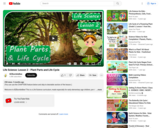
(You can use the CHAPTERS feature below and skip to desirable section of the lesson.)Welcome to BZBumbleBee! This is a Life Science curriculum, made especial...
- Subject:
- Life Science
- Material Type:
- Interactive
- Date Added:
- 03/11/2024

(You can use the CHAPTERS feature below and skip to desirable section of the lesson.)Welcome to BZBumbleBee! This is a Life Science curriculum, made especial...
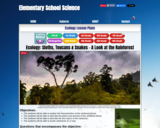
Objectives:
The students will be able to explain the characteristics of the rainforest biome.
The students will be able to describe the plants and animals of the rainforest biome.
The students will be able to describe the four layers of the rainforest.
The students will be able to locate rainforests on a map.
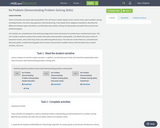
There’s more than one way to solve any problem! This LAP lesson module explains some common tools used in problem solving, including intuition, the seven-step approach, and brainstorming. It also details three categories of problems, describes the differences between types of problems, and illustrates why problem solving can help people accomplish their personal and professional goals.LAP modules are comprehensive instructional packages that include all elements of a performance-oriented lesson plan. This LAP includes a student narrative that includes information about problem-solving skills, a (So What?) discussion of why it's important to learn, and a short (Gray Zone) case addressing ethical issues. The instructor section features a comprehensive discussion guide, complete learning guide (short answer) and post-tests (multiple-choice) with descriptive keys, student activities, and more.
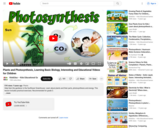
Help Sam the gardener in the Sunflower Greenhouse. Learn about plants and their parts, photosynthesis and energy. This lesson includes practical exercises. Good for grade 3.

Students identify and interpret political images, discuss how they were created and explain the influence of images on the public’s perception of politicians.
This activity requires a free registration for Newseum ED educator resources.
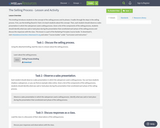
This briefing introduces students to the concept of the selling process and its phases. It walks through the steps in the selling process. First, use the briefing (found in Task 1) to teach students about this concept. Then, each student should observe a sales presentation in which the salesperson used a selling process. Given a list of the components of the selling process, students should identify what was said or took place during the presentation that constituted each phase of the selling process and discuss the responses with the class. This lesson is a part of the Marketing Principles Course Guide. To download it, visit mbastatesconnection.mbaresearch.org and select "Course Guides" under "Curriculum and Instruction."

This lesson, which includes a pre-lesson and post-lesson, provides students with first-hand experience about how the three branches of the United States government work together through separation of powers and a system of checks and balances.
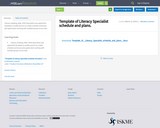
Literacy, Reading, Math, SPED Specialists may upload this template to modify and use as a daily schedule and lesson plan guide when working with multiple groups across sites.
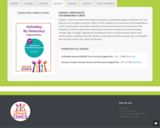
Students continue to explore the democracy journey, starting with people’s movements for civil liberties and civil rights during the 1950s to 1970s. Students are introduced to the Powell Memo of 1971, the business community’s response to this perceived attack on the American free enterprise, and then explore the landmark laws and social consequences of the resulting strategic legal campaign, organized by the Monied Power, to influence public opinion and, hence, political campaign outcomes. Students summarize the democracy journey, creating their own narrative of who rules.
Teachers can download the full set of lesson materials sets as zip files. Each set includes a teacher’s guide, PowerPoint slides, worksheets, and other materials. You can also watch instructional videos for each lesson to get an overview and learn how to teach them on the Ultimate Civics Youtube Channel.
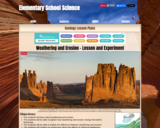
Objectives:
The students will learn about weathering and erosion.
The students will be able to explain how weathering and erosion change the Earth’s landscape.
The students will be able to explain the difference between weathering and erosion.
The students will conduct an experiment about the effects of chemical weathering.
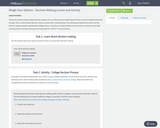
This lesson teaches students about decision making. First, use the Discussion Guide (found in Task 1) to teach students about this concept. Then, use the activity (found in Task 2) to assess their understanding. This activity gives students the chance use the decision-making model to evaluate their college choices. A full lesson module related to this concept can be found on the MBA Learning Center. Visit mba.instructure.com and search for "PD:017" in the Commons.